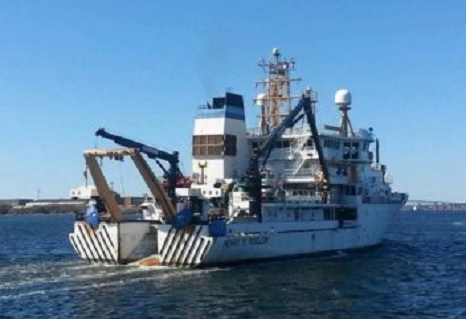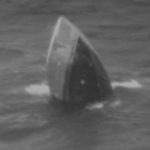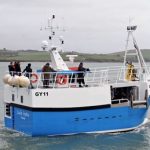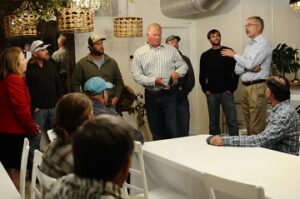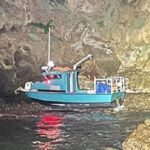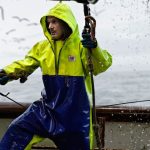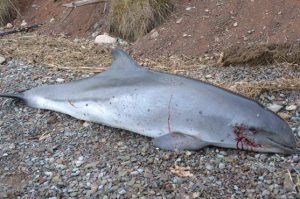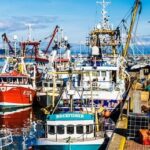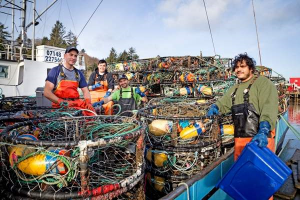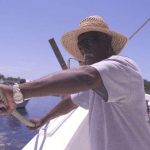Coronavirus: COVID-19 and mandated on-board fisheries observers during the pandemic resurgence
By Nils Stolpe, http://fishnet-usa.com/
On the heels of delaying its Northeast fisheries observer program this summer, the National Marine Fisheries Service cancelled three planned research surveys for the remainder of 2020 on the research vessel Henry B. Bigelow as the COVID-19 pandemic continues.
Anyone who is familiar with the NOAA/NMFS stock assessments realizes that the annual surveys conducted by the R/V Henry B. Bigelow in the Northeast and her sister ships in other regions (the R/V Bell M. Shimada, R/V Oscar Dyson, R/V Pisces, and R/V Reuben Lasker, (https://www.fisheries.noaa.gov/node/231) are the backbone of the federal fisheries management process. This fleet of state-of-the-art fisheries survey vessels, which represent an investment of almost half a billion taxpayers’ dollars, is of an importance to the federal fisheries that it would be extremely difficult to overstate.
The NOAA/NMFS “Navy’s” at-sea surveys in the Northeast region were cancelled at the beginning of the COVID-19 pandemic and will not be resumed for at least the remainder of this year. “Since March, we have been rigorously analyzing various options for conducting cruises this year and are taking a survey-by-survey, risk-based approach. After much deliberation, we determined that there was no way to move forward with these surveys while effectively minimizing risk and meeting core survey objectives,” according to officials at the Northeast Fisheries Science Center in a statement issued July 10. (https://tinyurl.com/y2e9y9wd).
The Bigelow is 208 feet long, cost $54 million to build, has a crew of 24 and a compliment of 17 scientists (https://tinyurl.com/yxgoks6z ). There isn’t a commercial fishing vessel on the East Coast that approaches the Bigelow in size, in displacement, or in the amount (or comfort) of the accommodations for crew and scientists. Having her sitting at the dock in Newport, Rhode Island is going to have an incalculable negative impact on the fisheries management process and could cost the commercial fishing industry from North Carolina to Maine tens of millions of dollars when the scientists/statisticians at NOAA/NMFS are finished applying the precautionary principal to near-term future landings.
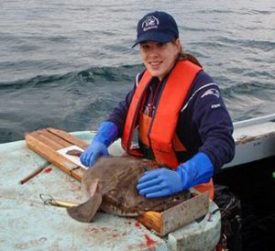 But mandatory on-board observers (https://www.fisheries.noaa.gov/topic/fishery-observers) pose no COVID 19 threat to commercial captains or crew?
But mandatory on-board observers (https://www.fisheries.noaa.gov/topic/fishery-observers) pose no COVID 19 threat to commercial captains or crew?
After a successful push by the commercial fishing industry (An East Coast Perspective on Coronavirus Impacts at https://tinyurl.com/yy2rggf3), because of COVID-19 concerns, NOAA/NMFS put off plans for resuming the mandatory on-board observers program for one month. It is now scheduled to restart on August 1 (see Temporary Waivers on Northeast Observers, Monitors Through July 31, Resuming Coverage August 1 at https://tinyurl.com/yanxmkrq.) According to the announcement, “during the month of July, we (NOAA/NMFS) will continue to work with regional observer and at-sea monitoring service providers to finalize their observer redeployment plans, conduct outreach with industry, and finalize our internal programs and policies that will support the safe and effective redeployment of observers and at-sea monitors in the region…. as has been done throughout the rest of the country, it is the intent of NOAA Fisheries to begin redeploying observers as soon as it is safe and appropriate to do so. While we intend to begin redeploying observers on August 1, we recognize that this public health crisis continues to evolve and changing conditions may warrant re-evaluating these plans.”
The assumption at NOAA/NMFS now is that it will be “safe and appropriate” for the crews, the observers, the crews’ families, the dock and handling/processing personal, and a whole bunch of other people to start redeploying observers on commercial fishing vessels as of August 1.
According to Chris Oliver (NOAA Fisheries Assistant Administrator) on July 16, 2020, “Observers and monitors, at-sea and shoreside, are an essential component of commercial fishing operations and provide critical information that is necessary to keep fisheries open and to provide sustainable seafood to our nation during this time.” This was in the build-up to his announcement that observer coverage was to resume – with minor procedural modifications – on August 1 (https://tinyurl.com/y484oumk). Apparently Mr. Oliver’s fleet of mega-yacht expensive, state-of-the art research vessels aren’t essential to commercial fishing operations nor do they provide critical information to keep fishermen fishing. But having a stranger armed with a measuring board, a scalpel, some jars and a clip board on board a small commercial fishing vessel, is and will.
Who sets the “importance to the management process” priorities at NOAA/NMFS?
“AIS Inc., a scientific services company headquartered in Marion, Mass., has been awarded a five-year, $50 million contract to provide fisheries observers for federal monitoring programs in the Northeast” (Press Release. Northeast Fisheries Science Center, June 11, 2018, https://tinyurl.com/y6kygnyd).
It sure isn’t the fishermen, their families, their neighbors, their colleagues or anyone else in commercial fishing communities.
I’d bet dollars to donuts that anyone with any experience in the fishery management process, at least anyone who didn’t work for NOAA/NMFS or one of the contractors that supply the observers, would be hard pressed to argue that observers on commercial fishing vessels are more essential or provide more critical information to that process than the trawl surveys that the government vessels and the scientists on them perform.
So continuing the surveys on these commodious NOAA/NMFS research vessels under the present – and obviously worsening – pandemic-spawned conditions can’t be done “while effectively minimizing risk.” Hence the survey cruises of the R/V Bigelow cancellations detailed above and others.
But the mandatory on-board observers are scheduled to be back aboard commercial fishing vessels come August.
What’s new in COVID-19 research?
Among the most recent publications on COVID-19 transmission was The implications of silent transmission for the control of COVID-19 outbreaks, published in the Proceedings of the National Academy of Sciences (07/06/2020) by a group of researchers from York University, the Yale School of Public Health, the University of Maryland School of Medicine and the University of Florida. The abstract is below (with my emphasis added) and the full article is available at https://tinyurl.com/y8krtmh5.
Since the emergence of coronavirus disease 2019 (COVID-19), unprecedented movement restrictions and social distancing measures have been implemented worldwide. The socioeconomic repercussions have fueled calls to lift these measures. In the absence of population-wide restrictions, isolation of infected individuals is key to curtailing transmission. However, the effectiveness of symptom-based isolation in preventing a resurgence depends on the extent of presymptomatic and asymptomatic transmission. We evaluate the contribution of presymptomatic and asymptomatic transmission based on recent individual-level data regarding infectiousness prior to symptom onset and the asymptomatic proportion among all infections. We found that the majority of incidences may be attributable to silent transmission from a combination of the presymptomatic stage and asymptomatic infections. Consequently, even if all symptomatic cases are isolated, a vast outbreak may nonetheless unfold. We further quantified the effect of isolating silent infections in addition to symptomatic cases, finding that over one-third of silent infections must be isolated to suppress a future outbreak below 1% of the population. Our results indicate that symptom-based isolation must be supplemented by rapid contact tracing and testing that identifies asymptomatic and presymptomatic cases, in order to safely lift current restrictions and minimize the risk of resurgence.
As reported by ABC News on July 8 in Asymptomatic and presymptomatic people transmit most COVID-19 infections: Study (https://tinyurl.com/y78t42xe):
“Silent transmission of the novel coronavirus could account for more than half of infections, according to one new mathematical model by U.S. and Canadian researchers.
The researchers utilized data on asymptomatic and presymptomatic transmission from two different epidemiological studies and estimated that more than 50% of infections were attributable to people not exhibiting symptoms.”
What this means is that if someone who is boarding a fishing vessel, for example a government mandated observer, has had any contact with ANYBODY who is infected during or after the observer’s two weeks of mandatory pre-trip isolation, there is a chance that they can infect the members of the crew with COVID-19. And there is no way of knowing if someone is a COVID-19 carrier short of an effective (whatever that means, but that’s a whole ‘nother can of worms) antibody test administered before coming aboard. According to this recent research, this is regardless of whether those observers are exhibiting any COVID 19 symptoms or not.
Most fishing communities are quintessentially “tight knit.” Virtually everyone is, if not directly related to, at least well acquainted with everyone else. And vessel captains attempt to hire crew members who they are familiar with or who come well recommended by colleagues, friends or family in the community.
Unfortunately the social distancing that the rest of us can readily employ to protect ourselves and others from COVID-19 infection is impossible on just about every commercial fishing vessel. This makes these personal relationships even more important than they usually are. In spite of NMFS Assistant Administrator Chris Oliver’s assurance that “in general, observers create no more risk than a crew member,” I want to put my safety (and the safety of my loved ones) in the hands of someone who I – or those whose judgment I trust – have no reservations about.
Sorry Mr. Oliver, but a recent college graduate working on his or her first post-graduation job for a federal contractor doesn’t fill that bill. Nor do the contracting businesses that he or she is employed by. They might be somewhat interested in the well-being of the observers they employ, they are probably seriously interested in their corporate well-being, but how interested could they be in the well-being of the members of fishing communities they are coming in the closest regular contact with on an around-the-clock basis.
Particularly in view of this recent COVID 19 transmission research it appears that, short of effective and readily available testing to indicate exposure, this means having observers tested on coming aboard the host vessel and then being isolated until (if?) they are cleared of COVID 19 infection. But the risks of depending on the commonly accepted indicators of infection and on any form of less than total observer isolation for a period of two weeks (or apparently 10 days as per the most recent federal guidelines) are far too dangerous to fishing communities than any potential gain to the fisheries managers of a few more data points.
Let the NOAA/NMFS research fleet and the NOAA/NMFS researchers do the job that they were designed or hired for, and spare the fishermen – and everyone they deal with when they are in port – the added worry of what exposure to infected observers via “silent transmission” of the COVID 19 virus could mean to them.
If you wish to follow up on this issue with your Senators or Representative in Washington, please do so.
Find your Representative – go to https://tinyurl.com/y95wunja
Find your Senator – go to https://tinyurl.com/l8dydhd







